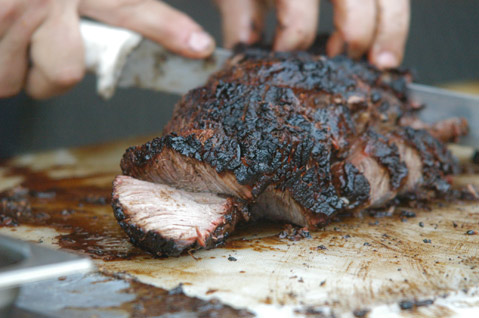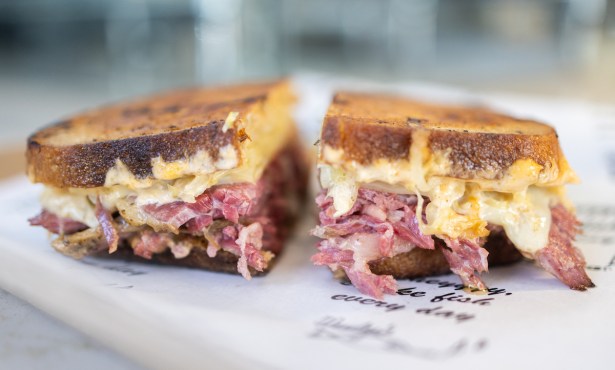The Twilight of Tri Tip?
How Santa Barbara Barbecue Was Nearly Undone

Once upon a time, Tri-Tip was my lady. We met when I was young, barely old enough to drive. I worked at the Montecito Country Club, where one Tuesday night every month the chefs cooked something called Santa Maria barbecue — steaks like small roasts surrounded by fat cooked over big flames so the fat charred into insulation for the extremely lean, beefy-tender interior. I was dazzled, in love from first bite, but assumed Madame Tri-Tip was unobtainable.
Not long later, in the early 1970s, my dad, educated by his Mexican-American droogs, started bringing home bags of the stuff from Santa Cruz Market. It was cheap as chicken then, and with a minimal rub of salt, garlic powder, and pepper, it changed family barbecue time into a red meat festival accompanied in our home by baked potatoes, gringo salsa, Vior’s garlic bread, and big-leaf romaine salads. Paradise.
But, as Wordsworth was known to say, it is not now as it hath been of yore. The tri-tip — which is actually not what Santa Maria barbecues, for that would be top round — has fallen on profit-taking times at the grocery store, where she always used to be a deal. Now she’s rather exclusive and excluding, discovered, rumor has it, by East Coast chefs who bought up the crop. Not long ago, you couldn’t even find it in nearby Los Angeles unless you had it custom-cut. But today there’s a joint in New York’s Grand Central Station concourse called Tri Tip Grill, even though some Internet critics refer to it as a Texas experience. Bah. Grocery-store tri-tip went from about $8 to $20 a steak in the last decade, and I claim the quality has been declining. Of course you can buy a select or choice piece from butchers like Shalhoob, but even they like to tenderize the meat before it goes out the door.
The gentrification problem began with recipes. My dad’s generation got jaded at this perfect slab of beef and began, innocently enough, marinating the meat with cheap vinaigrette mixes and then moved onto harder stuff like bottled teriyaki. I confess to a favorite mix of red wine, soy, and fresh thyme, plus rosemary with garlic slivers pushed into the meat. Even the great Chef Norbert Schulz marinated his in orange juice, and then browned the meat in a pan and finished it in the stove. Likewise, Thomas Keller of The French Laundry fame included a tri-tip recipe in his beautiful book Ad Hoc at Home, which includes piment d’Espelette, paprika, and Meyer lemon slices.
Do you see where I’m going with all this sophistication? Its apex occurred at the lovely small Barbareño restaurant in downtown Santa Barbara, where they serve some of the most delicious I’ve ever had. It was, as the waiter explained, a choice cut — not usually found in grocery stores — smoked for two hours, sous vide for 24 more, and then finished on a hot BBQ grill.
Enough, as William Blake liked to say, or perhaps too much. Sometimes I regret all that has happened to her, and I dream of the simple meal I loved so long ago. Then it struck me. I drove over to Santa Cruz Market on Montecito Street, and the butchers gladly sold me a nicely trimmed steak — a little fat on it is probably best for my advanced years. It was less than $14.
I took it home and lavished salt, pepper, paprika, cayenne, and a little garlic powder on the meat, leaving it out to reach room temperature while the coals got just right in the battered Weber knockoff in my backyard. I barbecued it in the newly approved method — turning frequently until the steak felt like a half-clenched fist when you pushed down — took it off, and let it rest for 15 minutes.
Meanwhile, I made a garlicky Caesar with lots of Meyer lemons and anchovy paste. (Never mind the potatoes and garlic bread. I’m old.) I carved it against the grain and watched my friends remember their own old courtship with the unofficial official meal of Santa Barbara, as if all the post-glamorizing breakup never did take place.



